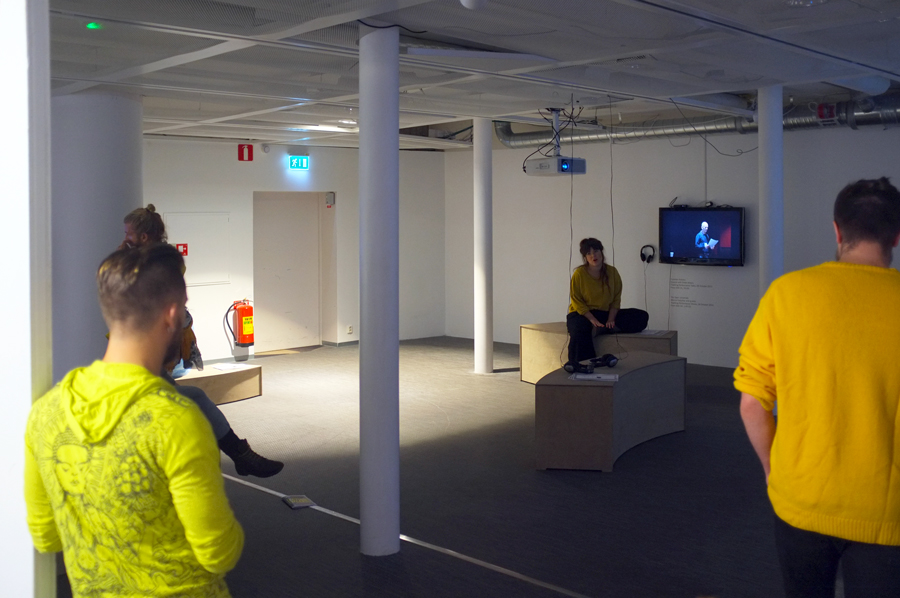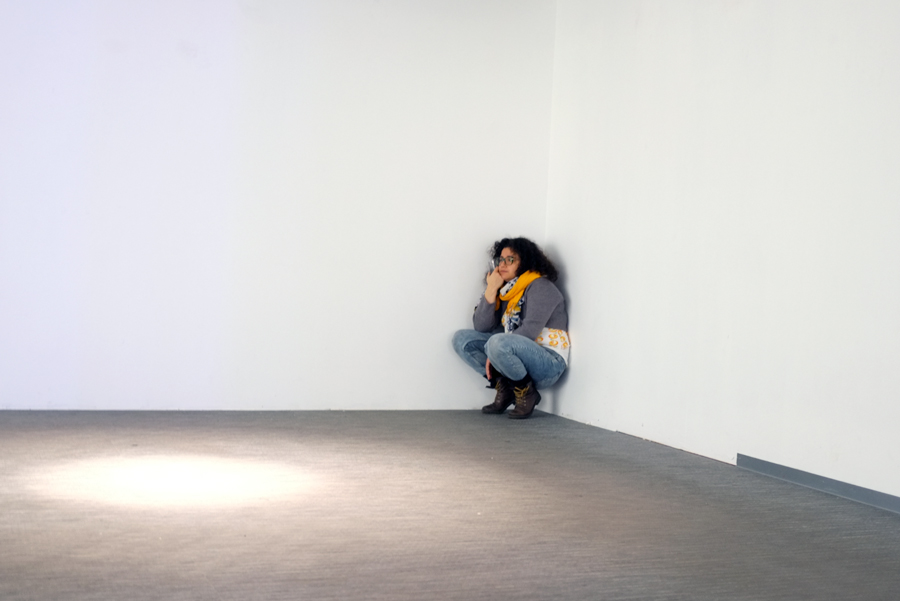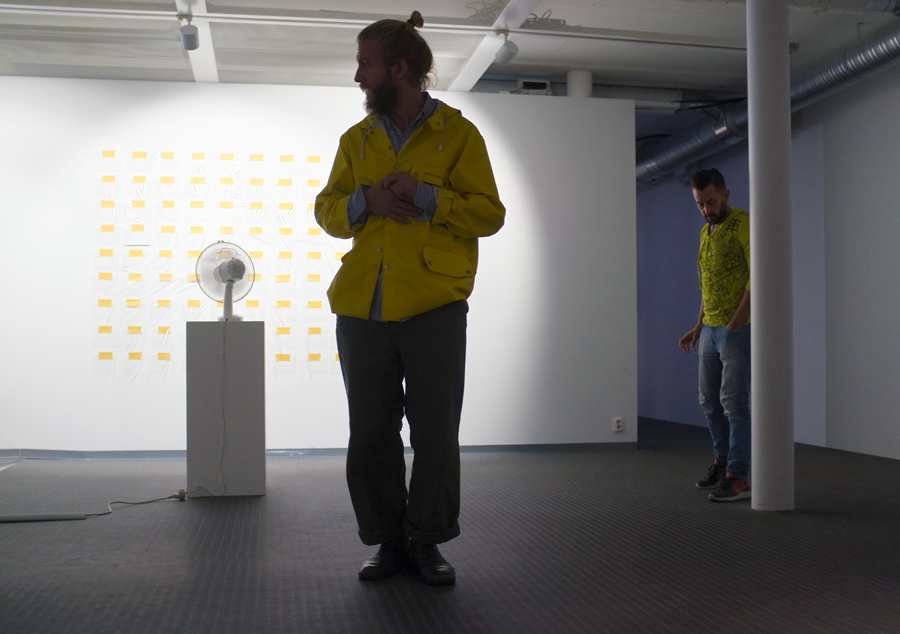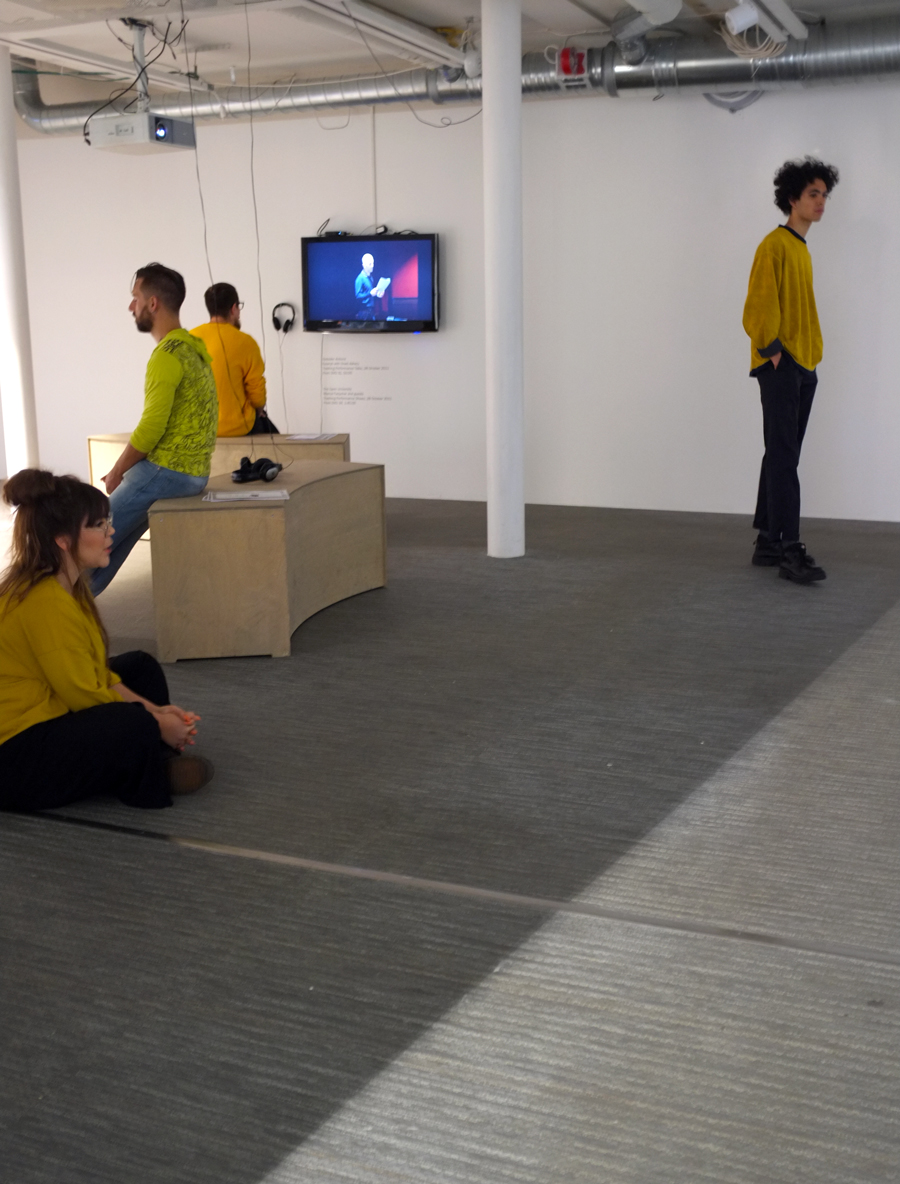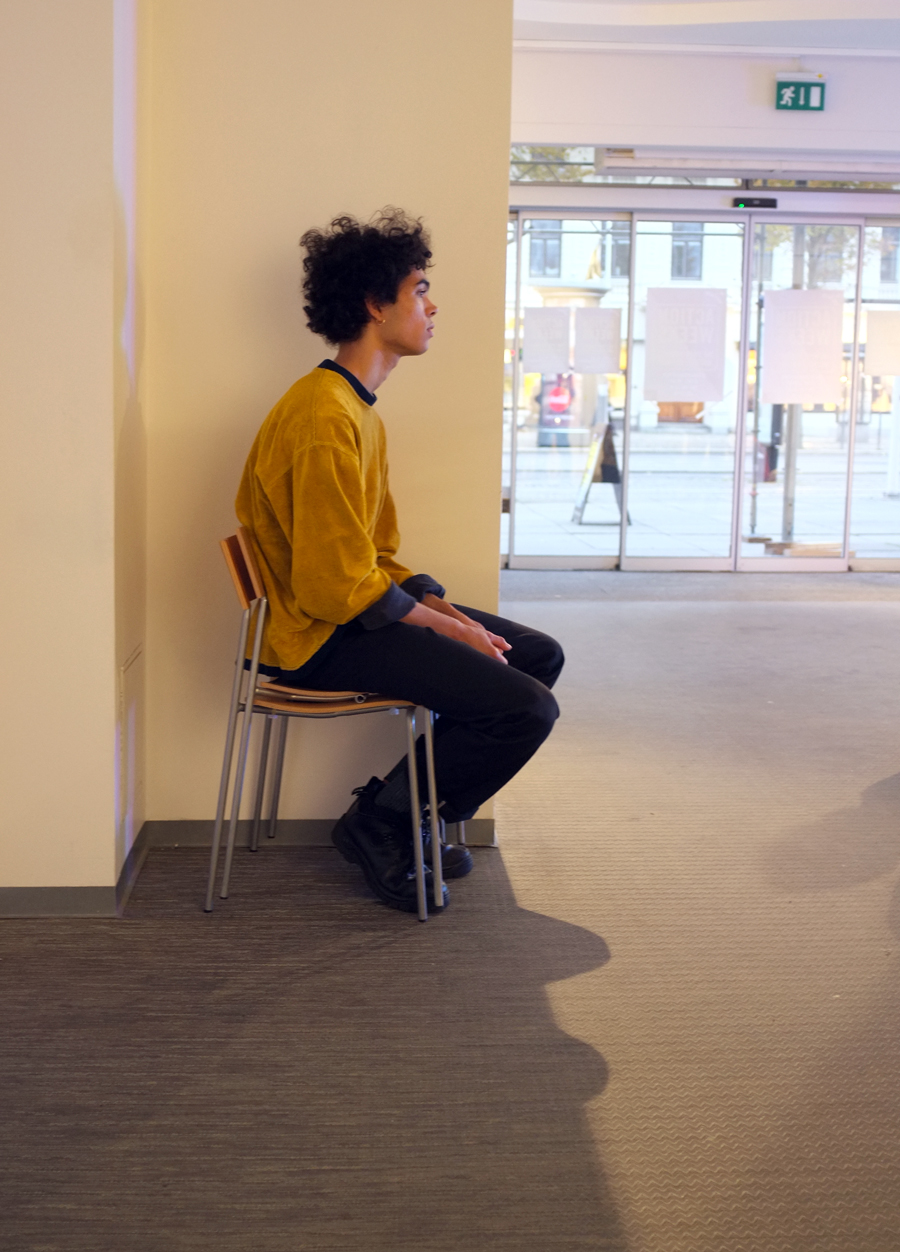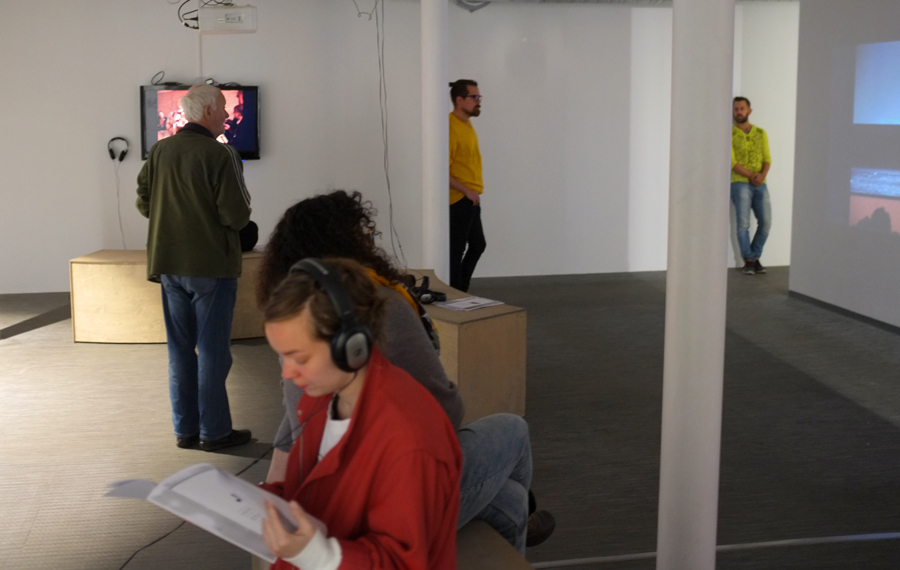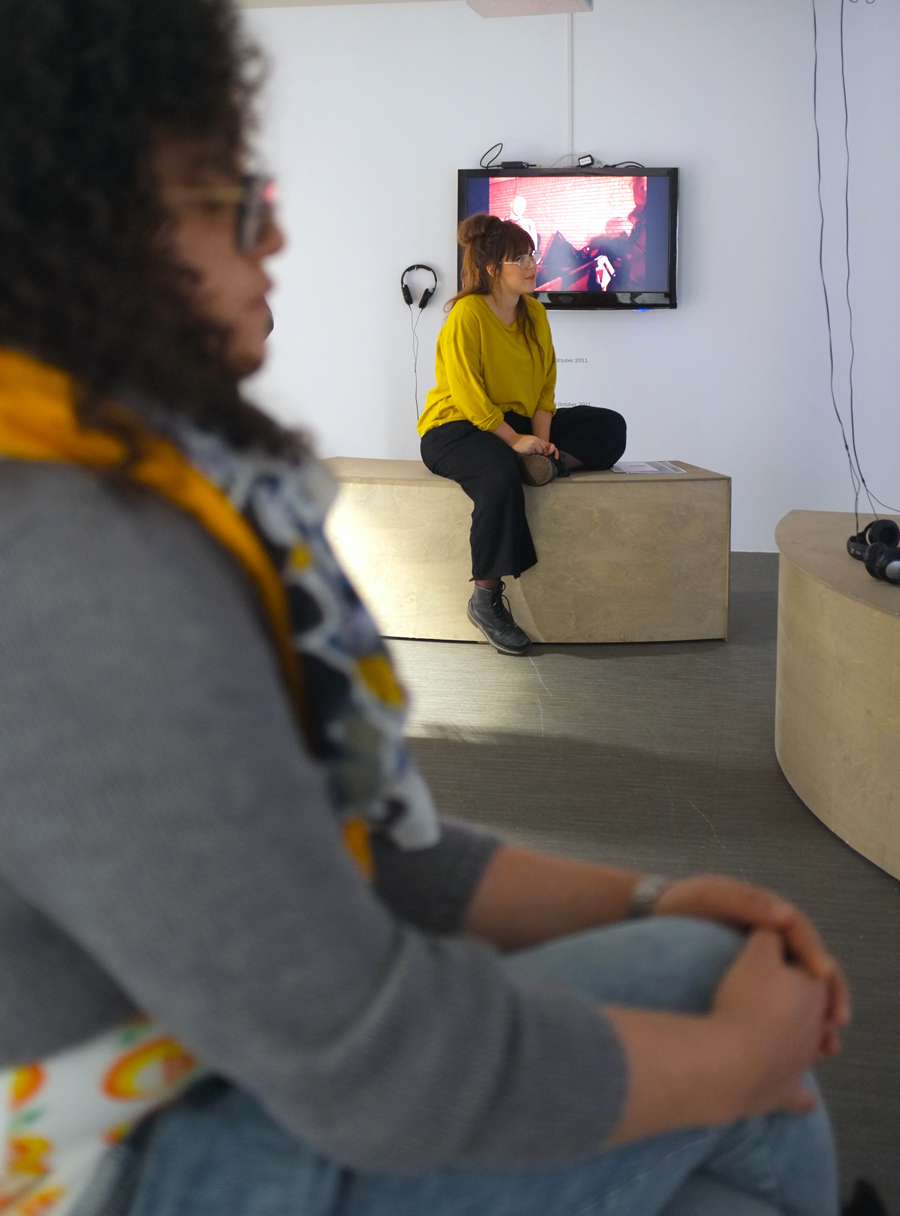What can I do I don’t know what to do
Exhibition: Action Week
Date: October 2016
Venue: A-venue; Göteborg, SE
The performance What Can I Do I Don’t Know What To Do results from the call to the themed exhibition Action Week, made by A-venue, an art venue run by University of Gothenburg.
What Can I Do I Don’t Know What To Do explores how the spatialization of thoughts and affects of doubt or uncertainty in public space in order to reflect about the social construction of affect. For a duration of 3 hours, a group of six persons wander through the art venue, amid video installations and intruding other performances taking place at the same time, repeating the sentence “What can I do I don’t know what to do” in English and in Swedish. This act borrows from a scene of Jean-Luc Godard film Pierrot, le fou, in which the character Marianne Renoir (played by Anna Karina) makes the viewer aware of her boredom by repeating “what can I do? I don’t know what to do”.
In What Can I Do I Don’t Know What To Do, the movement of the six performers in space results in a cacophonous doubt. When a performer approaches another, utterances entrain, thus suggesting a sense of chorus. Their movement was not predetermined. The encounters of bodies —of doubts— as well as the expressive emphasis and punctuation of the utterance was freely explored by the performers. By emphasizing tone and moods, the readership of the utterance comes across as lament, statement, apology, withdrawal, solicitation, frustration, resignation, vulnerability. These differences make visible the different behavior and the social construction —readership— of sentiment. Another aspect important to the performance concerns the documentation of ‘doubt’, what happens to the space and to elements nearby when the performance of doubt is taking place.
What Can I Do I Don’t Know What To Do provides an modest aesthetic framework to illustrate the potential of reading culture through doubt and uncertainty, bafflement, confusion, panic... What is the value of doubt? How can shattered certainty and self-sufficiency —to follow Jack Halberstam’s study of the queer possibilities of ‘failure’— offer standpoint to reflect about the contradictions of a society obsessed with meaningless competition? How does ‘failure’ help exposing how we participate in the production and mitigation of ‘subjected knowledges? (Halberstam, J., 2011, The Queer Art of Failure). Or, how is insecurity and disorientation mobilized within the political plane —to follow the study of Isabell Lorey— in order to govern and keep ourselves governable through ‘precarization’? (Lorey, I., 2015, State of Insecurity). How can this availability to do that is circumvented by the statement of not-knowing, help revealing the disengagement of the autonomy of the subject, but also, the emotional landscape of capitalism; how to take responsibility for oneself is part of the expected emotional labor of neoliberal strategy? What can demonstration of powerlessness foreclose?
What Can I Do I Don’t Know What To Do also reveals my growing interest for vocality; in the possibilities of the voice in its material (acoustic, affective) aspect, in its strategic deployment to activate listening and to withdraw from visual representation. How does the voiced manifestation of doubt affects the exhibition space? How does it help us understand how “emotions work to align some subject with some others and against other others? How do emotions move between bodies” (Ahmed, S., 2004, Affective Economies, in ‘Social Text 22’ nº2; 2004:117), making oneself available to be affected by that which one cannot know or feel, which Sara Ahmed calls “an ethics responding to pain” (Ahmed, S., 2004, The Cultural Politics of Emotions 30-31)?
The face-to-face encounter with the zombie wandering of the performers in the exhibition space can make us think about what gives us a stronger sense of doubt, what is being voiced or what is being seen? The visual encounter with these bodies in space does have the same sense of interaction that is implicit in the encounter with the voice. And yet, these voices are monologues, uttered to increase the sense of a disconnection or a lack of responsiveness from the outer world. This raises a question: which, gaze or the voice, better activates the plurality and relationality? For Adriana Cavarero this is a question that concerns different epistemological traditions in which the singularity of the vocal disappears, in which the acoustic is subordinated to sight, inasmuch as the voice (in the logocentric epistemology of the West) came to be associated with semantike, speech (Cavarero, A.; 2005, For more than one voice). In What Can I Do I Don’t Know What To Do the experience of the passers-by is dominated by speech, but a speech that does not create a relationship. The voice of the performers captivates the passers-by, but there is no interaction. The interaction is shut by the repetitive monologue that makes the passers-by spectacles of the performer’s doubt. They can only listen, passively, as if their silence is a necessary element to render the hegemonic discourse of uncertainty. But also, rendered as elements of the economy of spectatorship and consumption in art, as witnesses of an artistic statement about not-knowing what to show them.
Performers were Joel Danielsson, Joel Simpson, Kristina Hultegard, Olle Sundström, Rebecca Neumann, Sebastián Bartilson.
